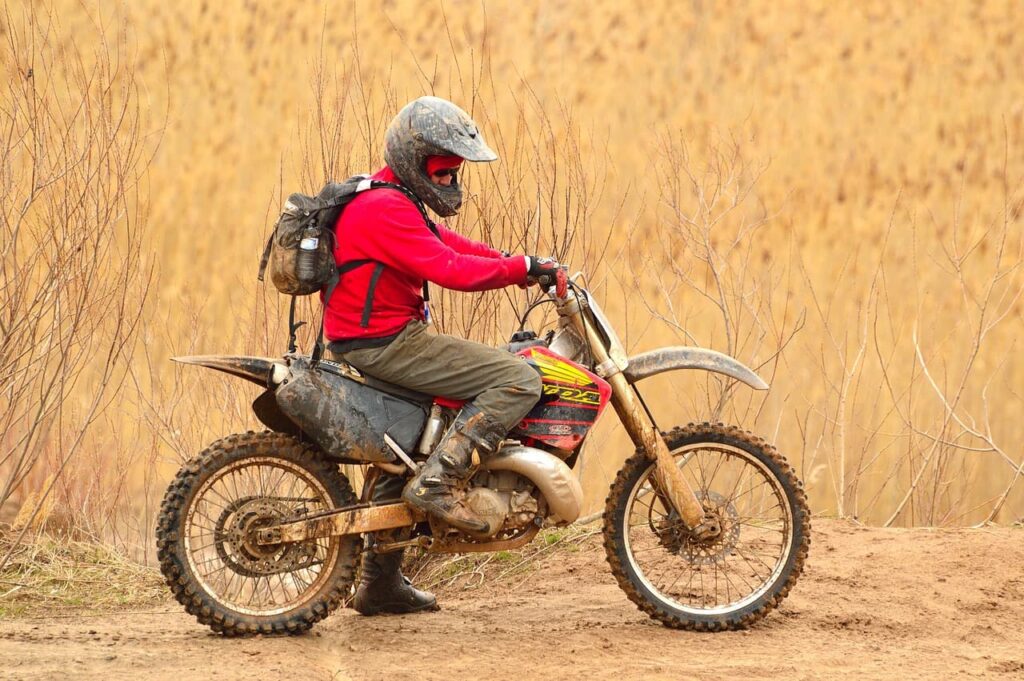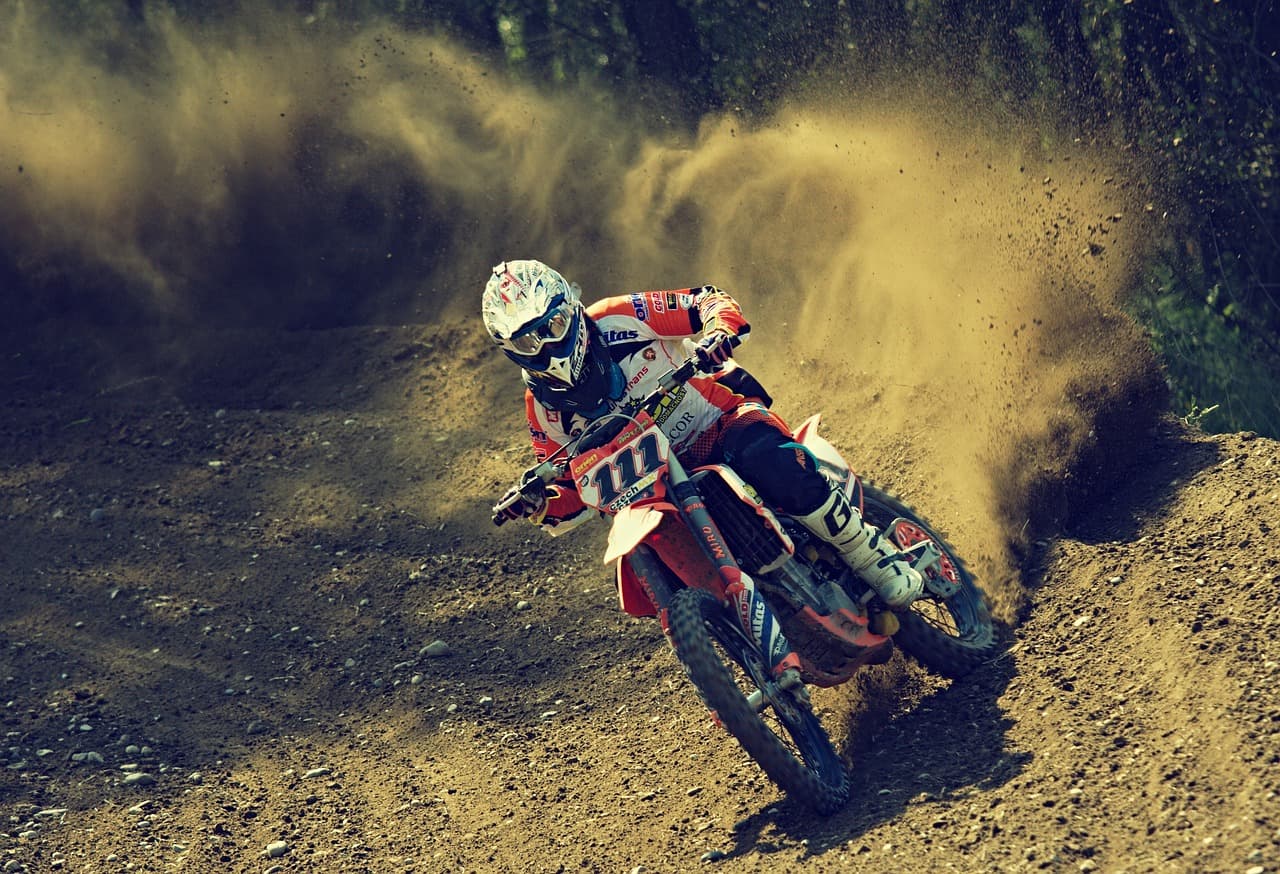Starting off in motocross, an intense motorsport that combines speed, agility, and the excitement of the race, demands both physical and mental preparation. This article tries to provide you a thorough overview of what you need to know and do to capture air in the world of motocross.
Understanding Motocross
Motocross began in the United Kingdom as a type of motorcycle trial sport in which riders competed on an off-road timed circuit. Motocross, unlike its cousin, motorcycle road racing, is dirty, difficult, and visually dramatic. Riders are as much athletes as pilots in this sport, negotiating natural and man-made obstacles at high speeds and frequently catching air over jumps.
Getting Started: Equipment and Gear
Your motocross journey begins with the right equipment. The bike is central to your experience. For beginners, a bike with a smaller engine, like a 125cc, is often recommended. It’s lighter and more manageable while you learn.
Safety gear is non-negotiable. A full-face helmet, goggles, gloves, motocross boots, body armor, and a neck brace are essential. These protect against falls, flying debris, and the heat of the bike. Choose quality gear even if you’re just starting out—it’s an investment in your safety.
Training and Fitness
Motocross is physically demanding. Riders must be in peak physical condition to control the bike and respond to the dynamic terrain. Core strength, cardiovascular fitness, and muscular endurance are key. Start with a fitness regime that includes cardio, strength training, and flexibility exercises. Many riders also engage in sports like mountain biking or swimming to build relevant muscle groups and endurance.
Learning Techniques
Mastering bike control is critical. Skills such as clutch control, throttle management, and learning to ‘read’ the terrain come with practice. Start on simpler, flatter tracks and gradually progress to more complex circuits. Techniques for starting, cornering, jumping, and even falling safely need to be learned and refined continually.
Local motocross clubs often offer training sessions, and working with an experienced coach can significantly speed up your learning curve.

The Rules of the Track
Understanding and adhering to track rules is vital for safety and sportsmanship. This includes flag signals, track etiquette, and the rules of racing. Joining a local club can help you learn these rules and the culture of the sport.
Maintenance Skills
Maintaining your bike is as important as riding it. Regular cleaning and mechanical checks will keep your bike in racing condition and teach you about its workings. Learn how to change the oil, clean the air filter, and adjust the chain. These skills will not only save you money but also ensure your bike is safe to ride.
Beyond the basic maintenance tasks, there are several other critical areas to attend to that will ensure your motocross bike performs at its best. Here’s a checklist of additional maintenance skills to master:
- Brake Maintenance: Regularly check brake pads for wear and ensure that the brake fluid is at the correct level. Bleed the brakes if you notice a decrease in their responsiveness.
- Suspension Tuning: Learn to adjust your bike’s suspension settings according to your weight, riding style, and the track conditions. This includes setting the sag, rebound, and compression to optimize performance and comfort.
- Tire Inspection: Always inspect tires for proper inflation, tread wear, and damage before and after rides. Knowing how to change a tire is also a valuable skill.
Joining the Community
Motocross has a vibrant, welcoming community. Connecting with other riders can provide support, advice, and camaraderie. Local clubs are great for meeting fellow enthusiasts and can provide opportunities for practice and competition. Social media groups and online forums are also valuable resources for tips and connecting with the wider motocross community.
Starting to Race
Once you’re confident in your skills and know your way around the track, you might consider racing. Start with smaller, local competitions and work your way up. Racing is not only about speed but strategy, understanding how to pass safely, and how to maintain your pace throughout the race.
Nutrition and Recovery
Proper nutrition fuels the body for the demands of motocross. A balanced diet rich in protein, carbohydrates, and healthy fats, along with proper hydration, is essential. Post-ride recovery routines, including stretching and adequate rest, help prevent injuries and keep you in top form.
Continuous Learning and Improvement
The learning never stops in motocross. Every ride, every race is an opportunity to improve. Analyze your performance, accept feedback, and be willing to make changes to your riding style or preparation. Professional riders spend countless hours analyzing tracks, competitors, and their own techniques to find areas to improve.
Conclusion
Starting your motocross trip is an experience that will test both your body and mind. It’s about more than just the bike; it’s about a way of life that values health, talent, and a love of the sport. With the proper preparation, equipment, and attitude, you may go from novice to skilled rider, and possibly even competitor. Remember, the ultimate purpose of motocross is to have fun, so fire up your engines and get ready to grab some air.




